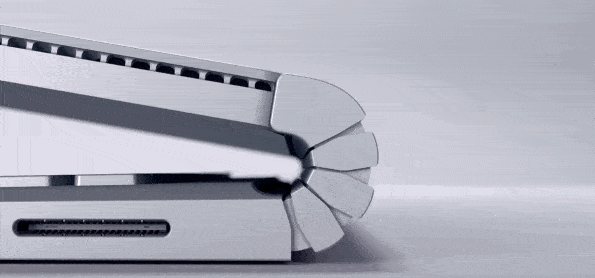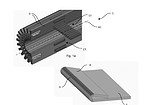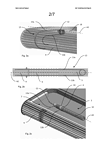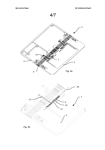Huawei patents a Surface Book-like hinge assembly for folding phones
2 min. read
Published on
Read our disclosure page to find out how can you help MSPoweruser sustain the editorial team Read more

There is a lot of momentum for making folding smartphones the future of the form factor, but there are still numerous engineering problems to solve to where it can be said folding smartphones are as reliable as regular devices.
In a recently published patent Huawei has weighed in with their solution to the problem of folding smartphones not being able to lie flat on a table due to the bulk of the hinge.
Their solution is a stack of “blades” in the hinge assembly, which somewhat resembles the appearance of the Surface Book (below).
They write:
The hinge assembly comprising a row of interconnected and abutting hinge blades and at least one linear actuator, the hinge blades being aligned in a common plane when the hinge assembly is in the unfolded position, each hinge blade being rotated relative neighboring hinge blades around a hinge assembly rotation axis when the hinge assembly is moved to the folded end position, the linear actuator comprising a rotation shaft and a linear drive arrangement, a first end of the linear drive arrangement being interconnected with the rotation shaft, a second, opposite end of the linear drive arrangement being connected to at least one hinge blade, an actuator axis extending between the first and second ends and perpendicular to the hinge assembly rotation axis, wherein actuation of the linear actuator along the actuator axis urges each hinge blade to rotate relative neighboring hinge blades around the hinge assembly rotation axis, the linear actuator further comprising a locking arrangement for locking the hinge assembly in at least one of the unfolded position and the folded end position, the locking arrangement comprising a cam element interlocking with a cam section located on the rotation shaft.
Huawei notes that the advantage of the assembly is that the hinge can be pivoted easily without effort, while still being securely locked into place in one of the desired positions, i.e. in the unfolded position or a folded end position. Furthermore, by having only one locking arrangement, there is no stacking up of individual manufacturing tolerances, providing better flatness in the unfolded position, while avoiding having to synchronize movement between several pivot points in order to provide enough locking force.
The patent was applied for on 22.10.2019 and was published on 29.04.2021. See it here.
Via WindowsUnited














User forum
0 messages